Planting potatoes before winter, advantages and risks of this growing method
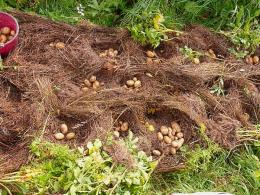
For those who like to enjoy young potatoes on the first warm days of spring, experts advise trying the original method of growing them. Residents of the south can safely use one of the technologies for planting potatoes before winter. It is in these regions that the climate is perfectly suitable for obtaining an early harvest of a variety of vegetables, including potatoes.
Content:
- What are the advantages of planting potatoes before winter, the negative aspects
- How to plant potatoes in autumn
- Once again about planting material
- Technology of planting potatoes under straw before winter, features of the method
- Caring for potato beds in spring
What are the advantages of planting potatoes before winter, the negative aspects
Although this method of growing potatoes has been practiced for a long time, it is associated with some risks, mostly for the reason that no one can accurately predict what autumn, winter and spring will be like.
It is worth considering that winter and spring temperatures can vary significantly depending on the region. This factor directly affects both the timing of planting tubers and the timing of their ripening.
It is no secret to experienced gardeners that those tubers that for some reason were left in the soil during the autumn harvest begin to grow much earlier than the plantings made in the spring.But not all potatoes can survive normally in the ground until spring; some of them are lost due to deep freezing of the soil.
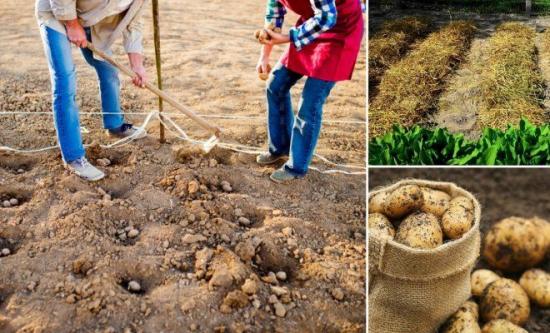
It is inspiring that the bushes grown from potatoes overwintered in the ground are much stronger than others and more resistant to low temperatures. The number and size of tubers in such bushes differ significantly from spring plantings, and are also less susceptible to the influence of various diseases and pests.
The method, of course, has its drawbacks - potatoes can freeze due to sudden temperature changes or severe frost, but it’s still worth the risk.
The advantages of the method include higher yields compared to those tubers that were planted in the spring, and an earlier ripening time.
How to plant potatoes in autumn
The main and important feature of this method is the correct planting depth. For example, tubers that remain in the soil for the winter at a depth of 0 to 12 cm will most likely freeze and not only not produce a harvest, but will not even sprout.
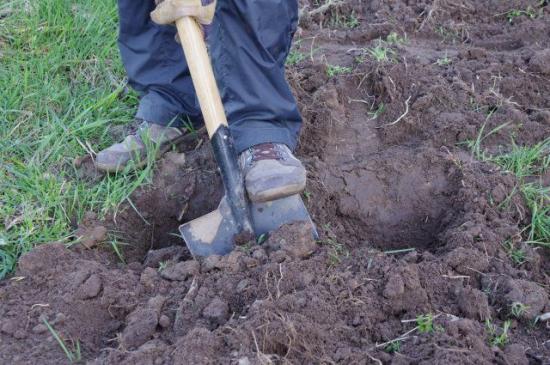
Calculating the planting depth
Those potatoes that, when plowing the soil, ended up at a depth of 20 cm to 30 cm will be pressed down by a dense layer of earth, therefore, their sprouts will take longer to break out and will spend a lot of effort on this process - which means they will be too weak and painful. In other words, they will not give the desired harvest.
Having made simple mathematical calculations, you can understand that the optimal depth is from 12 cm to 20 cm.
Weight of planting material
The weight of the tubers selected for planting remains an important factor. It is quite possible that a potato sprout will sprout from a depth of 20 cm, but the weight of the planted tuber should be about 100 grams.
When to plant and where
Time also plays a minor role and directly depends on weather conditions: if in the morning the soil is not very frozen, but by about noon it begins to thaw, then it’s time to start work.
In order to get a high-quality and good harvest of potatoes planted for the winter, you should take care of the planting site and prepare it properly. in the fall, after harvesting the entire crop, the soil with plant residues must be treated with a disk unit, organic fertilizers applied and plowed.
After the first rainfall, cultivation will need to be carried out. The plot should not be blown by the wind from the north side.
Preparing potatoes for planting
The tubers themselves should be carefully prepared. This is done as follows: for two weeks, the containers with potatoes are exposed to the sun.
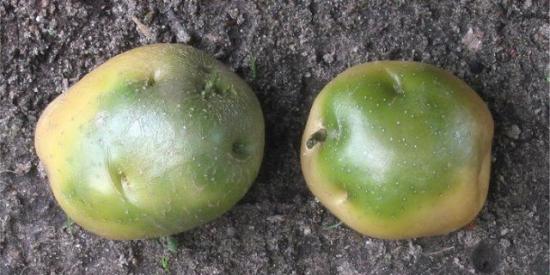
Over time, the tubers will become green both outside and inside. You can determine whether the greening of the material is complete by cutting several tubers.
By acquiring a green tint, the potatoes are filled with solanine, which will subsequently repel vegetable pests.
Immediately before planting, the material must be treated with a composition specifically designed for this process. You can purchase it at any specialized store, having previously consulted the dosage with a sales consultant.
Once again about planting material
For winter planting, it is better to use those potato varieties that were bred for cultivation in northern climates. This will significantly increase the chances of surviving the winter cold normally and will subsequently produce a good harvest.
Externally, the tubers should be without visible damage, weighing from 50 g to 100 g. For planting at the beginning of winter, the tubers should be without sprouts, at the end of winter - with sprouts.
The depth of immersion of tubers in the soil depends on time: at the beginning of winter from 13 cm to 15 cm, at the end from 10 cm to 12 cm.
It is advisable to fertilize the planting with wood ash and compost. After the first shoots appear, the planted area must be subject to timely hilling and weed elimination.
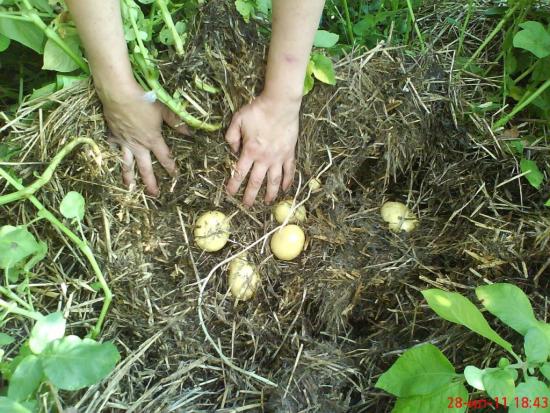
Technology of planting potatoes under straw before winter, features of the method
This technology involves the following scheme: on a plot of land 5 meters long and approximately 70 cm - 80 cm wide, tubers are planted in two rows, deepening them by 10 cm. Wood ash and compost must be added to each of the holes made.
Planting material must be without sprouts.
The holes are dug in the usual way and the planted bed is covered with small branches, which will create a kind of drainage. A layer of approximately 40 cm of organic material is laid on the branches, most often it is straw, but you can use dry tops that are left over from the autumn harvesting of vegetable crops.
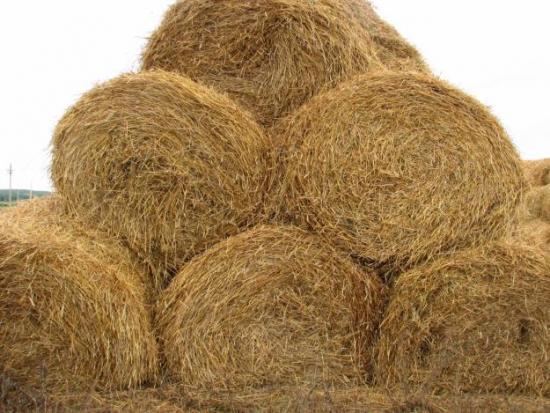
To create such a layer, the following are quite suitable: tops, straw, foliage, grass, and so on.
The time period for field work of this kind should be chosen in accordance with weather conditions, that is, precisely when the ground does not freeze much in the morning, but thaws closer to the middle of the day.
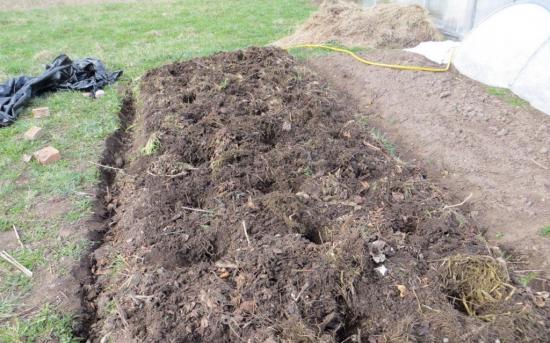
After covering with organic material, the area should be covered with polyethylene. This step should be done without fail.
The film will help protect the planting from the formation of an ice crust, the threat of which is quite real during winter temperature changes (freeze and thaw).Otherwise, there is a high probability that the tubers will freeze even before the time when the first shoots appear above the ground.
The entire area should remain in this “wrapped” state until the arrival of spring.
Caring for potato beds in spring
With the arrival of spring, the film and mulch should be removed, but not thrown away. Wire arches should be installed over the potato rows and covered with previously removed plastic film. If suitable wire is not available, it can be replaced with slats or suitable branches.
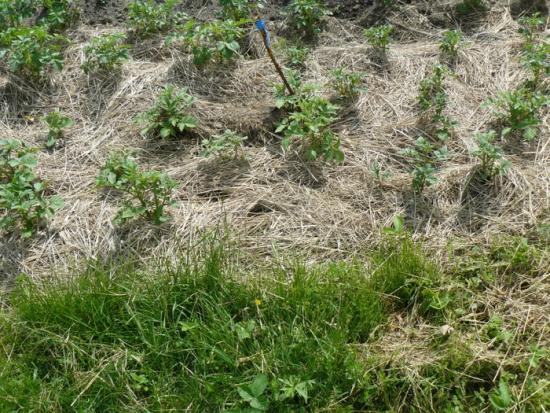
The area with winter potatoes must be mulched with compost. All activities carried out in the spring will contribute to faster and better warming of the soil with plantings.
You shouldn’t count on the first shoots to appear quite quickly. As the earth warms up, the tubers will begin to develop a root system.
During this period, special attention should be paid to the condition of the soil under the film. It will have a tendency to dry out.
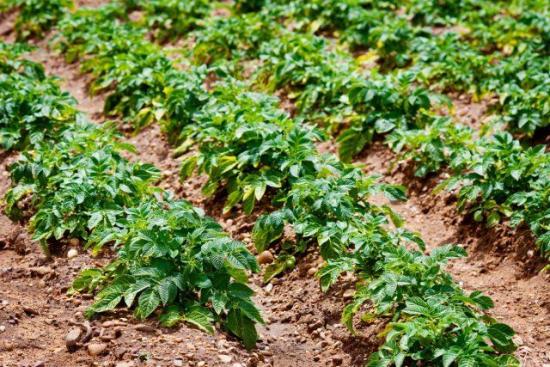
It should be eliminated in a timely manner, but not overdo it. They say correctly: there should be moderation in everything.
After a certain time, sprouts will appear above the ground. After they reach approximately 15 cm, the previously removed mulch must be returned to its place or, if desired and certain possibilities are available, it can be made from new material; it is best to use fine wheat or barley straw.
You will learn more about the original method of growing potatoes by watching the video:

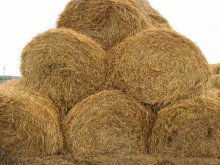
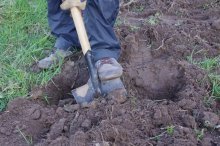



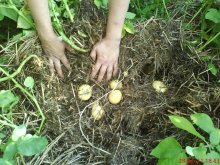

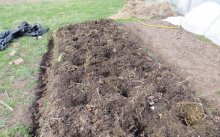


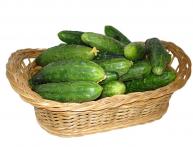

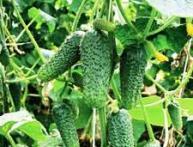
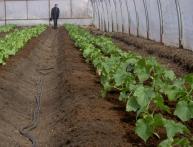
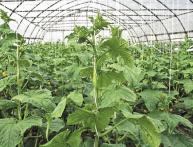
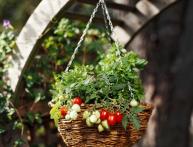
Comments
No, this method of planting potatoes is definitely not suitable for us, although sometimes our winters are warm and not very frosty, we could take a risk. This winter it was very cold here, for example, you never know what kind of winter it will be.
I have never tried to plant potatoes in winter, although I live in the southern region. I'll definitely try to experiment this year. Moreover, there is a successful variety that is quite resistant to bad weather.
I live in the central region, and I would not recommend planting potatoes before winter, because recently the winters have been cold, and snow has not always fallen in sufficient quantities during severe frosts. The tubers will freeze in this weather; it is better to sow this vegetable in the warm spring as before.
I have had potatoes that were forgotten last year sprouted several times. But I prefer to plant in warm soil. I read that some kind of fungus lives in cold soil, and if potatoes are planted in cold soil, they can get sick.